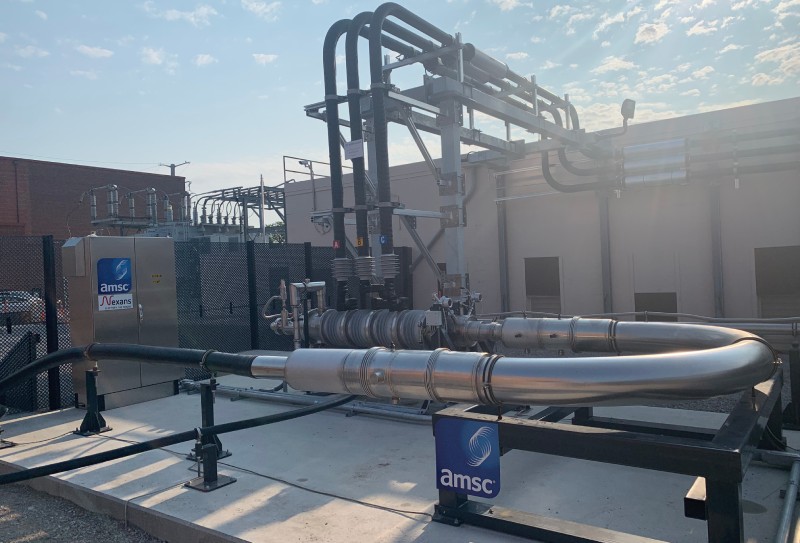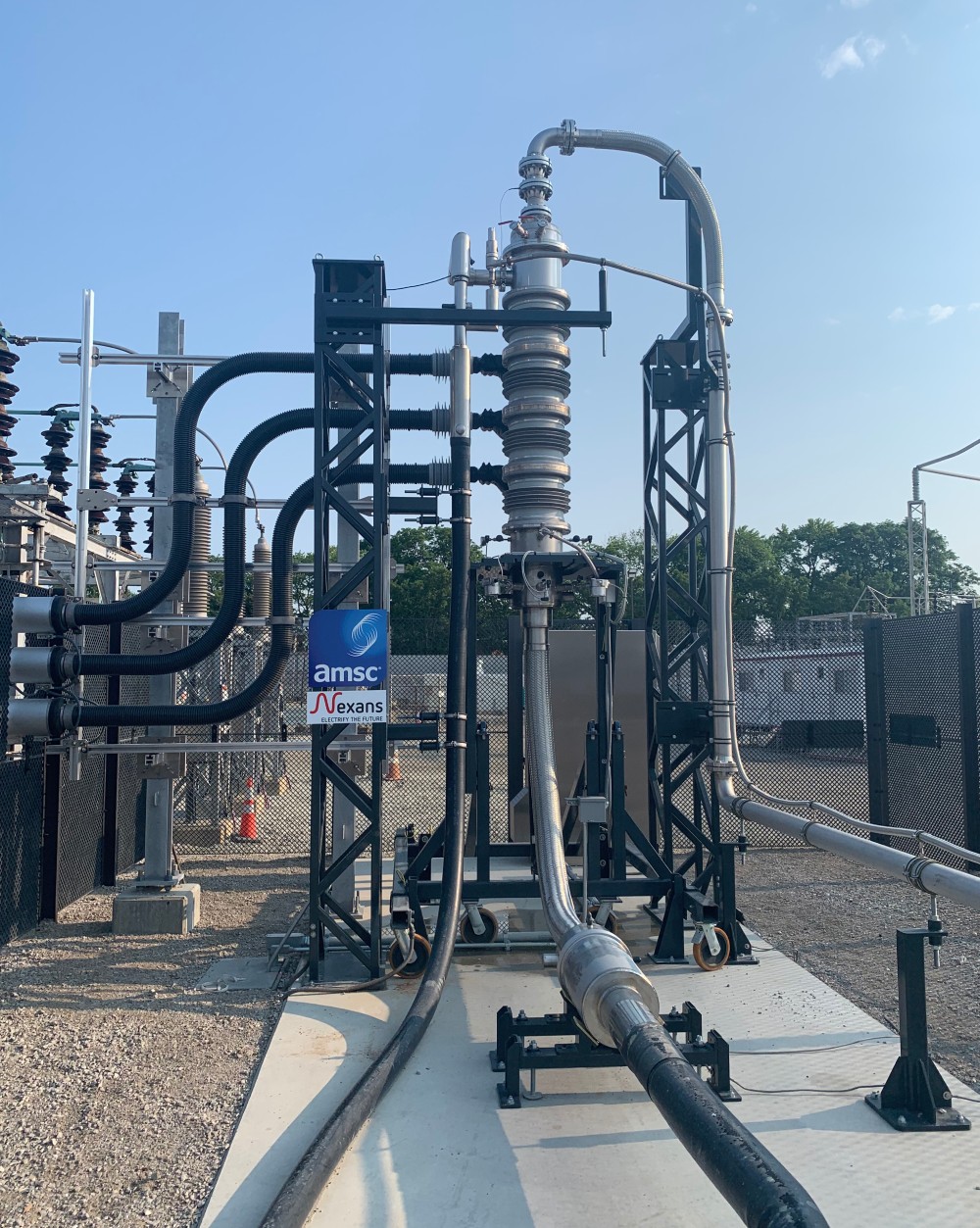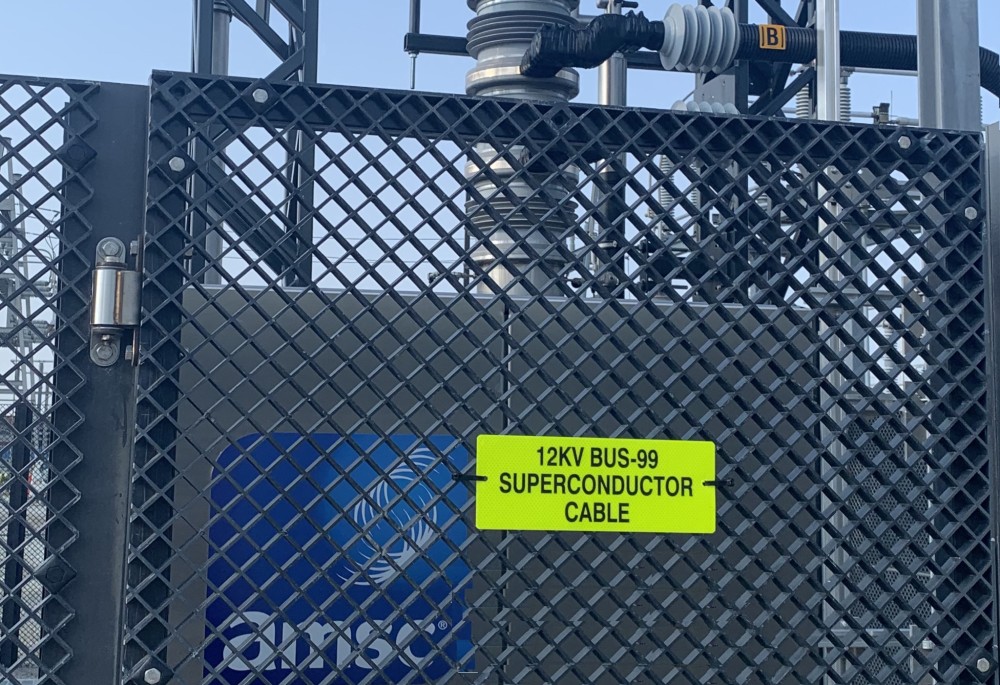Context
In June 2022, Nexans, in collaboration with SNCF Réseau and with support from Bpifrance, embarked on an innovative project aimed at enhancing the power supply infrastructure at Montparnasse train station in Paris, France. The project responds to the increasing demands on the railway network, necessitating a robust and efficient electrical system to support the growing rail traffic in one of Europe’s busiest transportation hubs.
Montparnasse station, established in 1840, ranks as France’s fourth-largest train station, serving over 50 million passengers annually with an expected surge to 90 million by 2030. The installation of superconducting cables aims to meet the escalating power demands imposed by this anticipated growth in rail traffic.
Challenges
The project faces several significant challenges, foremost among them being the need to upgrade the power supply infrastructure while minimizing disruptions to ongoing rail and road operations. The unique solution to this challenge lies in the utilization of superconducting cables, which will be integrated into Montparnasse station’s existing conduits. This approach presents engineering complexities, as it requires precise coordination to install the new cables within the confines of the pre-existing infrastructure without disrupting the station’s operations. Additionally, ensuring compatibility between the superconducting cables and the existing conduits poses technical challenges that demand meticulous planning and execution.
Key figures
+50 million
passengers annually, expected surge to 90 million passengers by 2030.
5.3 MW
per conduit
3,500 A
to 1,500 VDC
Nexans implication
Nexans plays a pivotal role in the project, drawing on its experience in superconductor technology and electrical infrastructure. The Group is tasked with designing and manufacturing the superconducting cables, as well as coordinating their installation within the existing conduits at Montparnasse station. Only a superconducting cable can combine a reduced diameter and exceptional power to deliver the performance required by SNCF Réseau: 5.3 MW per conduit, or 3,500 A to 1,500 VDC.
Superconducting power cables offer unparalleled advantages. As they have zero resistance, they transport electricity with minimal power loss and thus contribute to making the world more sustainable. This project illustrates perfectly how their compact nature enables them to transport very high power through a limited space. A single superconducting cable can replace multiple copper cables. Also, it has a minimal footprint, making high-capacity 1,500 V connections possible, which in turn improves the safety of the stations’ power supply.
Two cables connecting the Vouillé substation to the overhead lines of the tracks serving Montparnasse were pulled in the existing conduits in 2023. The main stages of this project are the design and manufacturing of the Nexans components in Bourg-en-Bresse, Calais and Hanover for a prototype loop (cable, joint, terminations) which have been tested in the SNCF Test laboratory in Vitry-sur-Seine, followed by the manufacturing of the two cables and their installation in the existing conduits.
We are proud to be working with SNCF Réseau on deploying this innovative solution to the rail industry. The fault current limiter developed by Nexans reflects our ongoing commitment to addressing technological challenges and contributing to the safety and reliability of the power grid. Every day, Nexans’ innovation teams take up the challenge of sustainable electrification, developing innovative solutions to support the growth of rail traffic.

Corporate Vice President, Innovation, Services and Growth, Nexans, Nexans
SNCF Réseau is delighted to be able to innovate and benefit from Nexans’ expertise to modernize and strengthen the electricity supply to the major train stations, allowing us to secure and improve the service provided to our customers. Developing this superconducting cable technology should enable us to achieve cost and deadline reductions. Likewise, it is proof of our teams’ know-how. We also thank Bpifrance for its financial support!
Deputy General Manager of Industrial Projects & Engineering, SNCF Réseau
This project is part of the innovation strategy implemented by SNCF Réseau to make rail transport more efficient and more sustainable. Through this partnership with Nexans, we are able to implement cutting-edge technological solutions for the benefit of our customers and the environment.
Superconductor Technology Manager, SNCF Réseau
The installation of superconducting cables at Montparnasse station represents a pioneering effort in enhancing the sustainability, reliability, and efficiency of railway power supply systems. Nexans’ involvement underscores its commitment to driving innovation in electrification and contributing to global sustainable development efforts.
Context
Operational since 2021, the Resilient Electric Grid (REG) project in Chicago aims to bolster the city’s electrical grid against extreme weather and catastrophic events. In collaboration with American Superconductor (AMSC) and Commonwealth Edison (ComEd), the project seeks to interconnect assets in downtown Chicago using superconducting cables. These cables offer high current density, compact installation footprint, and minimal environmental impact, making them ideal for densely populated urban areas.
Challenges
The existing architecture of urban power distribution substations isolates them from each other to prevent cascading effects from fault currents. However, this limitation restricts the grid’s resiliency and recovery options during outages caused by severe weather or attacks. The project addresses the challenge of mitigating the impact on this critical infrastructure of power outages and blackouts.
12 kV
The cable operates at 12 kV.
3000 A
It carries an AC current of 3000 A.
62 MVA
It can carry up to 62 MVA of power, surpassing the capabilities of conventional resistive conductors like copper and aluminum.
Nexans implication
Nexans plays a crucial role in the REG project by designing, manufacturing, and installing the superconducting cable. Using AMSC’s proprietary Amperium high temperature (HTS) superconducting wire, Nexans produces a medium voltage cable capable of carrying high currents and power levels, which can operate at 12 kV. The cable carries an AC current of 3000 A and can carry up to 62 MVA of power, far exceeding what is possible with conventional resistive conductors such as copper and aluminum. The cable’s compact footprint and low environmental impact make it well-suited for urban deployment.
The HTS cable and the connection for the REG system were manufactured at Nexans’ specialized superconductor facility in Hanover, Germany. The power accessories were designed at Nexans’ Calais plant. AMSC is managing the project and has provided the liquid nitrogen refrigeration system, in addition to the Amperium HTS wire. The company’s collaboration with AMSC spans over 18 years, underscoring its commitment to advancing superconductor technology.
We’re excited to use this technology to strengthen critical energy infrastructure in downtown Chicago. This REG project affirms Nexans position as the world leader in HTS cable technology and demonstrates that superconducting, high-power, medium voltage cable technology is commercially viable. We have collaborated with AMSC on superconductor projects for over 18 years and are pleased to continue this long-standing and special partnership.

Corporate Vice President Innovation, Services, and Growth, Nexans














